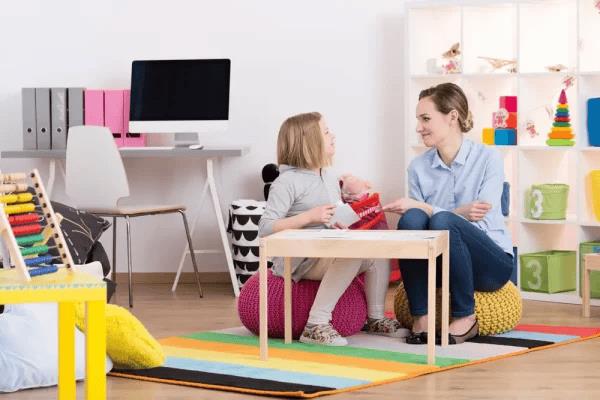The Comprehensive Guide to Center Based ABA Therapy: Benefits, Approaches, and Outcomes
For families navigating developmental challenges and autism spectrum disorder (ASD), finding effective therapeutic interventions is a top priority. Among the evidence-based treatments available today, ABA therapy stands out as one of the most researched and effective approaches. In particular, center based ABA therapy offers a structured environment where children can develop crucial skills while receiving consistent therapeutic support. This comprehensive guide explores everything you need to know about center-based approaches, their benefits, and what to expect from this therapeutic model.
Understanding the Foundations of ABA Therapy

Applied Behavior Analysis (ABA) is a scientific approach that uses behavioral principles to foster meaningful and positive changes in behavior. The therapy is highly individualized, focusing on improving specific behaviors such as communication, social skills, learning abilities, and adaptive functioning while decreasing behaviors that might interfere with learning and development.
When delivered in a center-based setting, ABA therapy creates opportunities for structured learning combined with real-world social interactions. Unlike home-based services, the center environment allows therapists to create controlled learning situations while providing natural opportunities for peer interaction and skill generalization.
The Unique Advantages of Center Based ABA Therapy
Structured Learning Environment
Center based ABA therapy provides a dedicated space specifically designed for therapeutic interventions. These environments typically feature:
- Distraction-minimized learning areas
- Specialized equipment and materials
- Spaces designed for different therapeutic activities
- Areas that simulate real-world environments for skill practice
The structured nature of center-based programs helps children understand expectations, build routines, and develop consistent behavior patterns that can eventually be transferred to other settings like home and school.
Social Skill Development
Perhaps one of the most significant advantages of center-based programs is the natural opportunity for peer interaction. Children receiving ABA therapy in a center environment can practice social skills with peers who are working on similar developmental goals. These interactions provide authentic contexts for:
- Taking turns and sharing
- Conversation skills
- Understanding social cues
- Group participation
- Building friendships
The presence of peers makes social skill development more natural and practical compared to simulated scenarios that might be created in home-based therapy.
Consistency and Intensity
Center based ABA therapy typically offers more consistent service delivery with fewer cancellations or interruptions. The controlled environment allows for:
- Predictable session scheduling
- Higher intensity of services when needed
- Seamless transitions between different therapeutic activities
- Reduced distractions compared to home environments
- Access to multiple specialists in one location
This consistency is crucial for many children with autism, as it provides the repetition and predictability that facilitate learning and skill acquisition.
Components of Effective Center Based Programs
Comprehensive Assessment
Every effective ABA therapy program begins with a thorough assessment of the child's strengths, challenges, preferences, and needs. In center-based settings, this assessment often includes:
- Structured observations across different center environments
- Standardized assessments
- Functional behavior assessments
- Parent and caregiver interviews
- Team-based evaluations from multiple specialists
The information gathered forms the foundation for developing individualized treatment goals and intervention strategies specifically tailored to each child's unique profile.
Individualized Treatment Planning
Despite the group setting, quality center based ABA therapy remains highly individualized. Each child receives a personalized treatment plan that addresses their specific needs. These plans typically include:
- Measurable skill acquisition goals
- Behavior reduction strategies where needed
- Data collection methods
- Protocols for teaching new skills
- Generalization strategies
- Parent training components
Regular progress reviews ensure that the plan evolves as the child develops new skills and faces new challenges.
Multiple Teaching Methodologies
Modern center-based programs employ a variety of teaching approaches within the ABA framework, including:
-
Discrete Trial Training (DTT): Structured teaching method that breaks skills into smaller components for systematic instruction.
-
Natural Environment Teaching (NET): Using naturally occurring situations to teach skills in context.
-
Pivotal Response Treatment (PRT): Focusing on "pivotal" areas like motivation and self-initiation to produce broad improvements.
-
Verbal Behavior Approach: Emphasizing language development through functions of communication rather than just words.
The best programs incorporate elements of all these approaches, selecting the most appropriate methodology based on the child's learning style and the specific skill being taught. This flexibility is a hallmark of quality ABA therapy programs.
The Role of Professionals in Center Based ABA Therapy
Board Certified Behavior Analysts (BCBAs)
BCBAs serve as the clinical directors of center-based programs, responsible for:
- Conducting assessments
- Developing treatment plans
- Supervising implementation
- Training staff and parents
- Monitoring progress and making treatment adjustments
Their advanced training in behavior analysis ensures that interventions are evidence-based and appropriately tailored to each child's needs.
Registered Behavior Technicians (RBTs)
RBTs work directly with children under BCBA supervision, implementing the treatment plans and collecting data. In center based ABA therapy settings, RBTs typically:
- Conduct one-on-one therapy sessions
- Facilitate group activities
- Collect treatment data
- Implement behavior protocols
- Provide feedback to supervisors and parents
The consistency of working with the same team of RBTs creates strong therapeutic relationships that enhance treatment effectiveness.
Integrating Family Involvement in Center Based Programs
Despite being conducted outside the home, effective center-based programs recognize the crucial role of family involvement. Quality programs incorporate:
Parent Training
Parents receive training on implementing ABA therapy techniques at home, ensuring consistency across environments. This training typically covers:
- Understanding behavior principles
- Implementing behavior management strategies
- Teaching and reinforcing skills
- Managing challenging behaviors
- Promoting independence
The goal is to empower families to become active participants in their child's development.
Regular Communication
Successful programs maintain open communication channels between the center and families through:
- Regular progress updates
- Parent observation opportunities
- Family consultation meetings
- Daily communication logs
- Video sharing of achievements
- Parent support groups
This collaborative approach ensures that strategies successful in the center can be implemented at home and vice versa.
Transitioning Skills from Center to Community
A primary goal of center based ABA therapy is helping children apply their skills in real-world settings. Quality programs include specific strategies for skill generalization:
- Community outings to practice skills in public settings
- Progressive transitions from one-on-one to group settings
- Graduated exposure to novel environments
- Coordination with schools and other service providers
- Planned transitions to less restrictive environments
As children master skills in the structured center environment, the focus shifts to helping them use these skills in different settings with different people.
Measuring Success in Center Based Programs
Evidence-based ABA therapy programs rely on data collection and regular progress monitoring to evaluate effectiveness. Key metrics typically include:
- Skill acquisition rates
- Reductions in challenging behaviors
- Increases in functional communication
- Development of independence in daily living skills
- Successful participation in group activities
- Generalization of skills across settings
This ongoing assessment allows for timely adjustments to treatment approaches, ensuring that interventions remain optimally effective.
Choosing the Right Center Based ABA Therapy Program
When evaluating potential programs, families should consider:
- Staff qualifications and supervision models
- Staff-to-client ratios
- Physical environment and safety measures
- Teaching methodologies employed
- Data collection and progress monitoring systems
- Family involvement opportunities
- Insurance coverage and financial considerations
Visiting centers in person, observing therapy sessions, and speaking with current clients can provide valuable insights into program quality and fit for your child's specific needs.
Frequently Asked Questions About Center Based ABA Therapy
How many hours of center based ABA therapy does my child need?
The recommended intensity of center based ABA therapy varies based on individual needs and typically ranges from 10-40 hours per week. Your child's BCBA will recommend an appropriate level based on their comprehensive assessment, considering factors like age, severity of symptoms, specific goals, and family circumstances.
At what age should my child start center based ABA therapy?
Research consistently shows that early intervention produces the best outcomes. Most children begin between ages 2-6, though ABA therapy can be beneficial at any age. For very young children (under 3), a combination of center and home-based services might be recommended.
How long will my child need to attend center based ABA therapy?
The duration varies widely depending on individual needs and progress. Some children attend for 1-2 years before transitioning to less intensive services, while others benefit from longer-term support. Regular progress reviews help determine when adjustments to service intensity are appropriate.
Will center based ABA therapy cure my child's autism?
ABA therapy is not a cure for autism, as autism is a neurodevelopmental condition. However, it can significantly improve skill development, reduce challenging behaviors, and enhance quality of life. The goal is to help each child reach their full potential and maximize their independence.
How is progress measured in center based ABA therapy?
Progress is measured through systematic data collection on targeted behaviors and skills. This typically includes frequency counts, duration measures, interval recording, and qualitative assessments. Data is regularly reviewed to evaluate treatment effectiveness and make necessary adjustments to intervention strategies.
How do I know if center based ABA therapy is right for my child?
Center based ABA therapy may be particularly beneficial for children who need structured learning environments, social skill development opportunities, and consistent high-intensity intervention. Consulting with developmental pediatricians, autism specialists, and experienced BCBAs can help determine the most appropriate service model for your child's specific needs.
Finding the right therapeutic approach for a child with autism requires careful consideration of many factors. For many families, center-based programs offer an ideal balance of structured learning and social opportunities. By understanding the components of quality ABA therapy programs and asking the right questions, parents can make informed decisions about their child's developmental journey.




